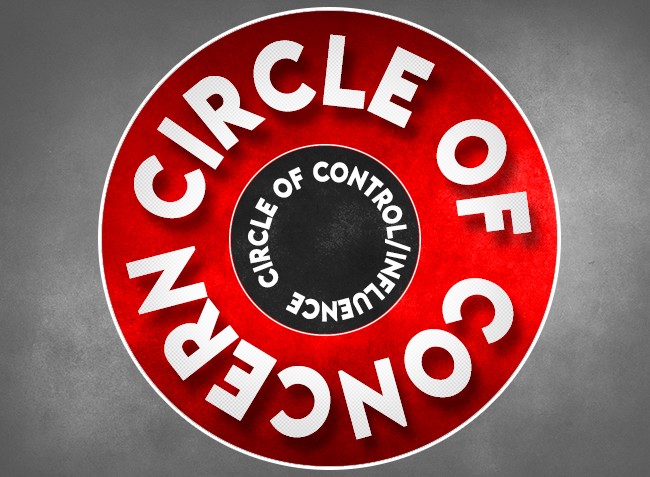
When I was a graduate assistant I shared a desk with a now well-known strength coach by the name of Kaz Kazadi. He turned me onto several books about the way of the samurai. In the book Hagakure, the author speaks of the stories of the samurai, their history, important people involved, and a lot more stories. It gives advice on how to deal with and lead people and still holds as true today as it did several centuries ago.
One part of the book talks about how to address things with people. The author says something to the effect of, “It’s far better to tell someone a story about yourself and what you did or change you made as a result of a certain situation rather than to address them directly about it. It is the person's natural response to push back if you push them. If you lead them to a conclusion and they get it, then the problem is solved. If they do not get to the conclusion, it is of no consequence, as they did not start to revolt against you because of your suggestion.” It also goes on to say that if you are in a situation where it has to be directly addressed, do so in private and one-on-one. Any time that you are more than one-on-one, the person will feel attacked regardless of what was said.
These two points are ones that I based a lot of my coaching career on. I would see issues that arose with the team and address them with different parables. We’d go over a lot of different stories to address a lot of different issues. They never took more than five minutes to tell from start to finish, plus the added time of people talking about them. We would take common parables, historical figures, and anything else that came to mind to illustrate our points. Even if it didn’t get the person on board at the time, it didn’t push them further away, which meant that we could try again from another position if necessary.
The parable is one of the oldest tools to teach. Aesop’s fables were all little parables to teach people right from wrong, what to do in different circumstances, and how to respond to challenges. If the parables work so great for the general population and work great for the samurai, they should work great for athletics, too. Never doubt the power of the parable; it has been teaching lessons to people for millennia. If they didn’t work, the ancient Greeks would have ceased their usage, as they were some pretty smart cats themselves.
I have gone through a professional transition to where more of my time is spent in research and policy rather than coaching. As such, I don’t need my stash of parables any longer and will be releasing them one by one for anyone to take and use (or not, it’s of no matter to me).
I wrote something for our staff called the “Championship Nature Series.” It was a series of parables or concepts from books that could be used by any coach at any time to address a need of the team for that current time. As everyone is different, every team is different, and every situation is different, we had a multitude of parables to go with the situation. Sometimes we would shift gears a little and do exercises. This topic, taken from Stephen Covey’s 7 Habits of Highly Effective People is something that I used when the athletes were getting stressed out about things they couldn’t control.
The Circles of Concern and Influence
For this exercise, you need either a sheet of paper or a dry erase board. You will draw a large circle, which is the circle of concern, and fill it in. You will draw a smaller circle inside, which is the circle of influence, and fill it in.
What is the circle of concern?
The circle of concern is everything that concerns you. It can be related to finances, relationships, friends, school, parents, movies, music, games, practices, competitions, tournaments, teammates, etc. Anything that concerns you at all will be in the circle of concern. As your team names things that fall into their circle of concern, write them in the circle.
What is the circle of influence?
With all of the things that concern us, there are only a few things that we can directly influence. These things are always in our influence if not under our control. Write in the smaller inner circle things that fall into the circle of influence. It will be far fewer than the circle of concern.
How can you use these circles?
The circles show you what you can influence and what you can’t. There are many things that concern you, but you can’t do anything about them. Why waste your energy on them? You can focus your energy on the things within the circle of influence to be a much more productive athlete. Here are some examples of concern versus influence: You can’t control what your coach says to you, but you can control how you respond to them. You can’t control what your teammates do, but you can tell them how it helps or hurts the team. When times feel dire, look back to the circles of concern and influence and then remember that when all else fails, you are in control of yourself and your response to the world around you. Nothing can bother you unless you let it.
How can the circle of influence grow?
If you focus on the circle of influence, over time it will grow in size. For instance, by focusing on what you can control, your own performance, your own leadership abilities, and developing your own competencies, you will become a better player and leader. By becoming a better player and leader, you eventually become a person of leadership on the team and have greater influence on your teammates.
Focus on what you can control and influence and don’t spend any time worrying over things you can’t control. You can’t control your significant other, your teachers, the past, or your family. Don’t spend time worrying about these things. It’s pointless, as nothing will ever change. Instead, focus on what is in your circle of influence.












1 Comment